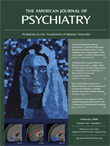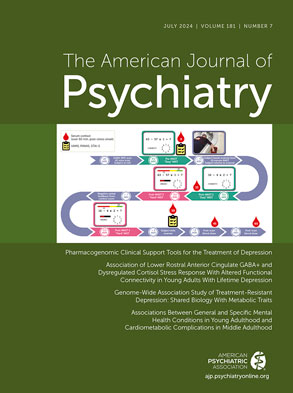The successful treatment of pathological gambling with nalmefene—reported by Grant et al. in this issue—illustrates that psychiatry is finally gaining rational treatments for its illnesses, treatments based on demonstrated brain mechanisms. The underlying hypothesis about pathological gambling tested in this treatment study is that the disorder is
not about the gambling but about the addiction. The study is well designed (i.e., double-blind, placebo-controlled, multi- and fixed-dose, random assignment) and well executed (i.e., multisite, validated scales, defined outcome criteria). It shows that a known treatment for drug and alcohol addiction is effective when applied to pathological gambling. There are many optimal characteristics about the study that produced an informative answer, but it is the initial approach of applying a drug already known to treat addiction to the treatment of gambling that is the critical element. Pathological gambling is hypothesized to be a type of “natural addiction,” characterized by compulsive consumption of a natural reward (as seen in some cases of over-eating and sexual addiction). From this perspective, pathological gambling would be potentially sensitive to drugs used to treat addictions. This addictive formulation is further supported by the observations that gambling behavior can be induced in individuals with Parkinson’s disease during dopamine agonist treatment
(1), consistent with the involvement of dopamine in the mechanisms of addiction.
A common molecular pathway in the brain has been ascribed to addiction thought to be involved with “natural” addictions as well as with drugs
(2). Emerging concepts suggest that addictions converge on a common circuitry in the brain’s limbic system, the mesolimbic dopamine pathway, especially the segment connecting the ventral tegmental area in the brainstem with the nucleus accumbens in the basal ganglia. All drugs of abuse increase dopamine release, directly or indirectly, in the nucleus accumbens, and many also stimulate the release of endogenous opioid peptides (e.g., enkephalin) in this region. The drugs induce a long-term potentiation-like state in ventral tegmental area dopamine neurons and induce a long-term depression-like state in nucleus accumbens neurons. Broader brain circuits are also involved in mediating addiction, including the amygdala, hippocampus, and frontal cortex—all parts of the brain’s memory systems. The implication of this observation, also being borne out in research, is that human addiction involves powerful emotional memories. With chronic drug exposure, certain chemical markers change in the ventral tegmental area-nucleus accumbens circuit, including increases in tyrosine hydroxylase (dopamine’s synthetic enzyme) and CREB (cyclic AMP response element binding protein). Delta FosB (a Fos family transcription factor) is uniquely induced in the nucleus accumbens not only with chronic drug use but also with chronic consumption of natural rewards like sucrose drinking (in animals) or, presumably, gambling in humans. These common brain mechanisms seem to mediate at least some components of all drug addictions and (hypothetically) natural addictions, although much less data are available about the latter. Consequently, drugs that treat one addiction would be expected to treat another. The Grant et al. article demonstrates such an outcome by showing that a drug for opiate and alcohol addiction can also effectively treat pathological gambling. The molecular mechanism of nalmefene action in pathological gambling likely includes the blockade of opioid receptors in the nucleus accumbens, thereby reducing the actions of endogenous opioid peptides released in this region with gambling behavior and thereby also blocking the induction of delta FosB in these nerve cells.
Further support of the idea that pathological gambling is a type of natural addiction is provided in a related study by Slutske. She finds that pathological gambling often gets better on its own. It is not, in general, a chronic condition, as is also the case for some types of alcohol addiction. Instead of patient groups from a treatment site, the Slutske study examined two large community-based, longitudinal samples (N=2,417 and N=43,093) to estimate characteristics of the illness. Pathological gambling appears to have resolved on its own in over one-third of the cases. The most frequent course of the syndrome is a single episode lasting a year. Of individuals with the diagnosis, 62% report one episode in their lifetime, 11% report two episodes, and only 27% report three or more episodes. The long-held assumptions of the chronicity of pathological gambling may have arisen because prevalence estimates were developed around treatment observations, not from community samples. This is a bit like estimating the prevalence of myocardial infarction from a cardiologist’s practice. These observations as a group begin to suggest that there are characteristics of the underlying neurobiology of addictions that allow for illness episodes and even spontaneous remissions. Further biochemical understanding of these episodic-remitting aspects of addiction may bring even newer clues about the biology of these conditions. And greater focus on the molecular basis of reward and addiction may generate novel treatments for these disorders.

